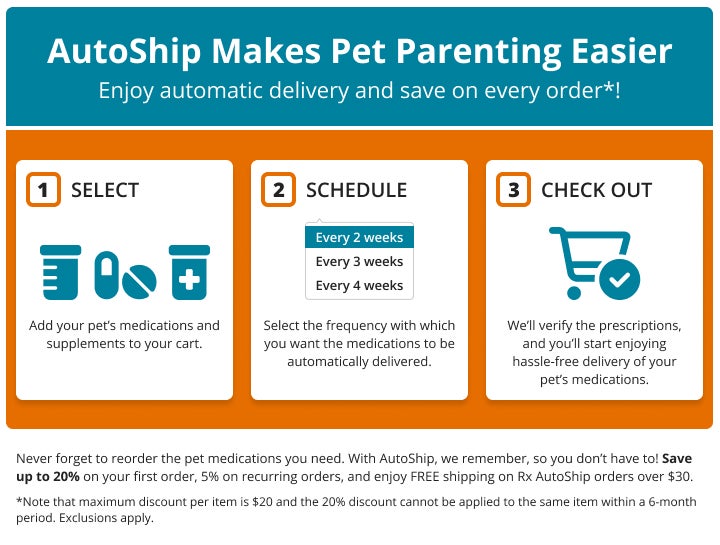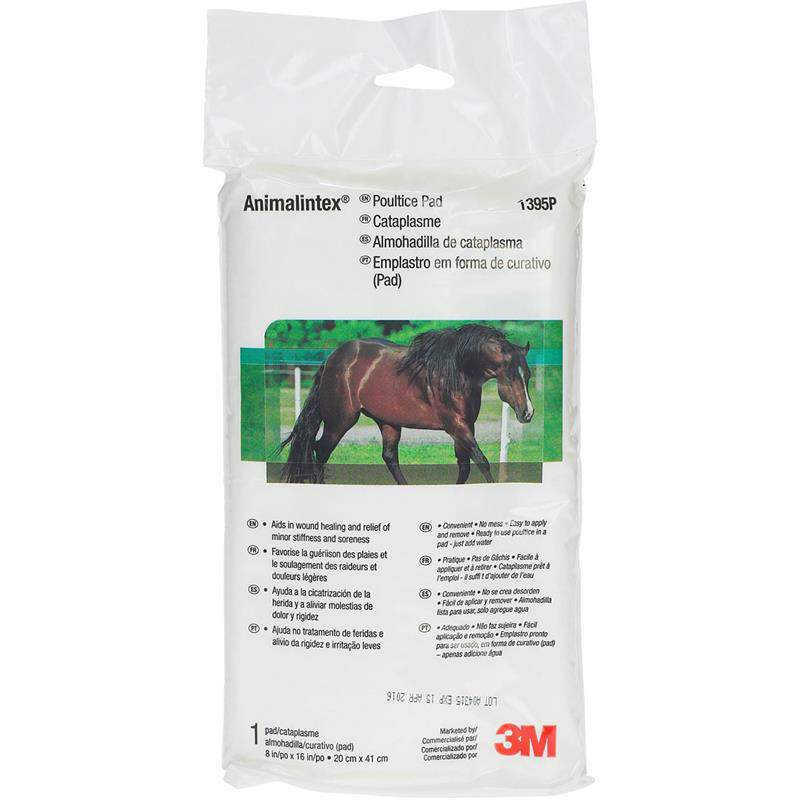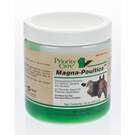

1 of 1
Click on image to open expanded view
Item No.
10082
Animalintex Poultice
AutoShip & Save 20%
- Save on your Autoship
- Hassle-free: Easily Skip or Change Shipment Dates.
- Commitment-free: Cancel anytime
- Free Shipping.
With AutoShip, we remember so you don’t have to! Learn more
Animalintex Poultice Description
Animalintex Poultice Pad is a dressing that treats open and infected abscesses and wounds, sore shins, splints, capped elbows and hocks, seedy toe, thrush, laminitis, puncture wounds, mud fever, and cracked heels. It prevents inflammation, relieves bruises, and comforts sprains.
Which animals/pets is Animalintex Poultice for?
For use in unsterile dogs and horses.
Animalintex Poultice uses
Features of Animalintex Poultice Pad:
- Treats sore shins, splits, seedy toe, laminitis, puncture wounds, abscesses, and open wounds
- Easy to apply
- Mess-free
- Convenient
- No bucket required
- May be used many times
- Relieves soreness and stiffness
- Helps wounds heal
What does Animalintex Poultice do?
Animalintex Poultice Pad may be applied as a dry dressing or a cold, hot, and/or wet poultice.
Animalintex Poultice ingredients
Tragacanth 6.02g/pad, Boric Acid 2.08 g/pad
Animalintex Poultice overdose: What to do?
Contact your closest emergency pet hospital.
What to know before using Animalintex Poultice
- Keep away from children.
- Avoid wrapping the bandage too tightly.
- Change pad every 12 hours, or more often.
- Wash your hands prior to and following each use.
- If the poultice is left on for too long, it can cause skin maceration. If skin becomes macerated, seek veterinary attention.
How is Animalintex Poultice sold?
1 ready-to-use 8" x 16" pad that can be cut to size.
Manufacturer
3M
Overview
HOW TO USE ANIMALINTEX
Hot wet poulticing
1. Clean mud and dirt away from the area to be treated.
2. Use whole or cut to the size required. (Place remainder back in the bag for use later).
3. Place with the plastic side upermost in a shallow tray. (Do not use a bucket unless it has been very carefully cleansed first).
4. Use boiled water that has been allowed to cool to 38ºC/100ºF and pour the water into the tray, around the edges of the Animalintex.
5. When saturated, take out and gently hand squeeze out the excess water. (If pus is to be absorbed, squeeze out more water so that the poultice is damp rather than wet).
6.Place on the affected area with the plastic side on the outside, moulding the Animalintex to the contours of the body.
7. Hold in place with a bandage such as the Robinson Superflex cohesive bandage, making sure the poultice is completely covered.
Cold wet poulticing
Follow the same procedure as above, butt using boiled water that has been allowed to cool thoroughly before pouring. When the Animalintex is saturated, squeeze out excess water and apply cold to the affected area. Dry dressing
After cleaning the area, apply the dressing directly then bandage. Used dry, Animalintex may be used several times and still retain its effectiveness.
Dry pressure padding
Use dry, apply directly and bandage.
Main Ingredients
Tragacanth 6.02g/pad, Boric Acid 2.08 g/pad
Liniments & Poultices for Horses

Horses are prone to receive injuries and develop aches and pains over time, especially if they are racing horses. Due to all the stress their bodies are put through during those races like any living being wear and tear to the body and age will most like develop an ache here or there. When it comes to injury a good rule of thumb is cold treatment for fresh trauma and as a preventative therapy after heavy work and heat treatment for arthritis and older, set injuries that are cold to the touch. Liniments are designed to provide temporary relief to minor aches and pains often associated with arthritis and overworked muscles. Poultices usually provide temporary cold therapy for inflamed tissues and are commonly clay based.
Liniments are a common substance used by trainers and owners of horses. They may be applied diluted or full-strength, usually added into a bucket of water when sponged on the body. Liniments are especially useful in hot weather to help a hot horse cool down: the alcohols help the product to quickly evaporate, and the oils they contain cause the capillaries in the skin to dilate, also increasing the cooling process. Liniments should always be applied according to the manufacturer's directions, and diluted as necessary. Many horse owners apply liniments to the legs as a brace, and then wrap over it. In this case, they should be sure that the liniment is not too strong, or it may cause blistering of the skin. Liniments may be used on the legs and body, but should
not be applied to more sensitive areas such as the head, genitals or groin of the horse. The body may also be too sensitive to apply liniments if the horse was recently body-clipped.
not be applied to more sensitive areas such as the head, genitals or groin of the horse. The body may also be too sensitive to apply liniments if the horse was recently body-clipped.






